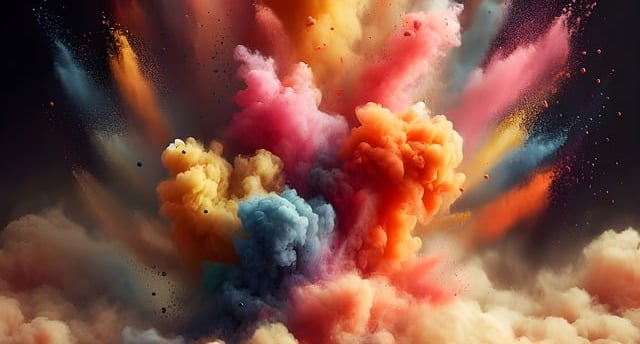Color Psychology: Choosing the Best Colors for Your Home
Discover the art of color psychology to design the perfect Indian home. Explore the best colors for every room, blending tradition and modernity for a harmonious space.
DECORATING
1/26/20253 min read


India is a land of vibrant cultures, rich traditions, and diverse lifestyles, and the colors you choose for your home can reflect this uniqueness. The psychology of colors plays a significant role in creating the right ambiance, boosting mood, and enhancing comfort. Whether you're renovating or designing your dream home, understanding how colors influence emotions can help you make thoughtful decisions.
The Importance of Color Psychology in Indian Homes
Colors can evoke feelings of warmth, tranquility, energy, or luxury. In an Indian home, where traditional elements blend with modern aesthetics, color choices can be influenced by cultural significance, regional preferences, and personal taste. For instance, warm tones like reds and oranges are often associated with festivities, while earthy tones are inspired by India's natural landscapes.
Let's explore the best colors for your home, room by room, with tips to maximize their impact.
Living Room Colors: Welcoming Warmth
The living room is the heart of your home—a space for family bonding and entertaining guests. Here’s how color psychology can guide you:
Earthy Tones: Shades like terracotta, ochre, and beige create a grounded and inviting atmosphere, reminiscent of Indian earthenware and textiles.
Blues and Greens: These colors evoke calmness and balance. A soft teal or sage green can bring freshness to the space.
Reds and Oranges: For a vibrant, energetic feel, consider warm hues like coral or maroon. Pair these with neutral furniture for a balanced look.
Kitchen Colors: Energetic and Inviting
In Indian culture, the kitchen is considered the soul of the home. The colors here should stimulate appetite and energy:
Sunny Yellows: A bright yellow can energize the space, adding cheer and optimism.
Rustic Reds: Deep red tones symbolize passion and warmth, perfect for a space that nourishes the family.
Neutral Whites: For a modern look, whites and off-whites can make your kitchen appear spacious and clean.
Bedroom Colors: Peaceful Retreat
Your bedroom is your sanctuary. Choose colors that promote relaxation and serenity:
Pastel Shades: Soft pinks, lavenders, and powder blues are calming and promote restful sleep.
Earthy Greens: Olive or moss green can create a tranquil connection with nature.
Rich Purples: Deep purples like plum or wine bring a luxurious and cozy vibe.
Dining Room Colors: Stimulating Conversations
The dining area is a space for enjoying meals and engaging conversations. The right colors can enhance both:
Warm Hues: Brick red, mustard yellow, or burnt orange stimulate appetite and create an inviting ambiance.
Rich Browns: Wooden tones add warmth and elegance to the space.
Accents of Gold: Gold accents can lend a touch of luxury and traditional Indian charm.
Bathroom Colors: Refreshing and Serene
Transform your bathroom into a calming retreat with these shades:
Cool Blues: Aqua, turquoise, and seafoam green evoke a spa-like atmosphere.
Neutral Whites and Greys: These colors make the space look clean and modern.
Soft Pastels: Peach or blush tones add a soothing touch.
Hallway Colors: Connecting Spaces
Hallways often get overlooked, but the right colors can tie your home’s design together:
Light Neutrals: Beige, ivory, or light grey make narrow spaces appear larger and brighter.
Bold Accents: Use accent walls or vibrant artwork in deep blues or maroons to create interest.
Exterior Colors: First Impressions Matter
Your home's exterior sets the tone for what’s inside. Choose colors that complement the Indian landscape and architectural style:
Bright Whites and Creams: These timeless colors keep your home cool in the Indian heat and pair beautifully with colorful accents.
Terracotta and Sandstone: Inspired by traditional Indian architecture, these earthy tones blend harmoniously with the surroundings.
Bold Blues and Greens: For a standout look, opt for jewel tones like royal blue or emerald green.
Tips for Choosing the Perfect Colors for Your Indian Home
Consider Natural Light: Rooms with abundant natural light can handle darker, bolder colors, while smaller, dimly lit spaces benefit from lighter shades.
Think About Functionality: Choose colors based on how you use the room. For instance, warm tones for active spaces and cool tones for relaxation.
Balance Tradition and Modernity: Incorporate traditional Indian colors like saffron, indigo, and gold with contemporary neutral palettes.
Use Accent Walls: Add depth and personality to a room without overwhelming it by painting a single wall in a bold color.
Experiment with Textures: Combine paint with textures like wood, stone, or metallic finishes to enhance the overall look.
Final Thoughts
Color psychology is a powerful tool to make your Indian home feel vibrant, cozy, and uniquely yours. By understanding how different hues affect emotions and energy, you can create a harmonious living space that reflects your personality and cultural heritage. So, go ahead, unleash your creativity, and paint your home with colors that inspire and uplift!
Follow Us
Explore smart furniture ideas for modern living.
For Enquiry
contact: info@urbanspacee.com,
+91 91886 37751
© 2025. All rights reserved./Terms and Conditions/Privacy policy
Newsletters
This blog contains affiliate links.For promoting there products ,we may earn a commission if you purchase through these links, at no extra cost to you.
